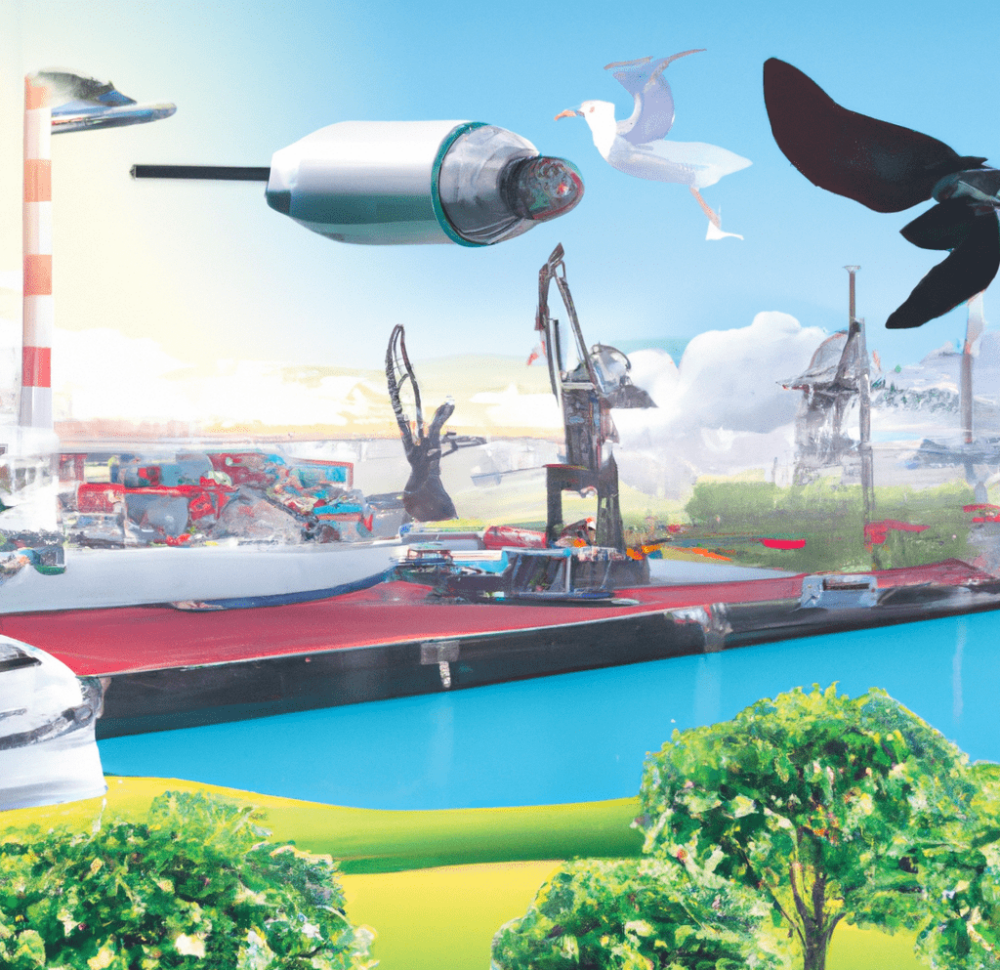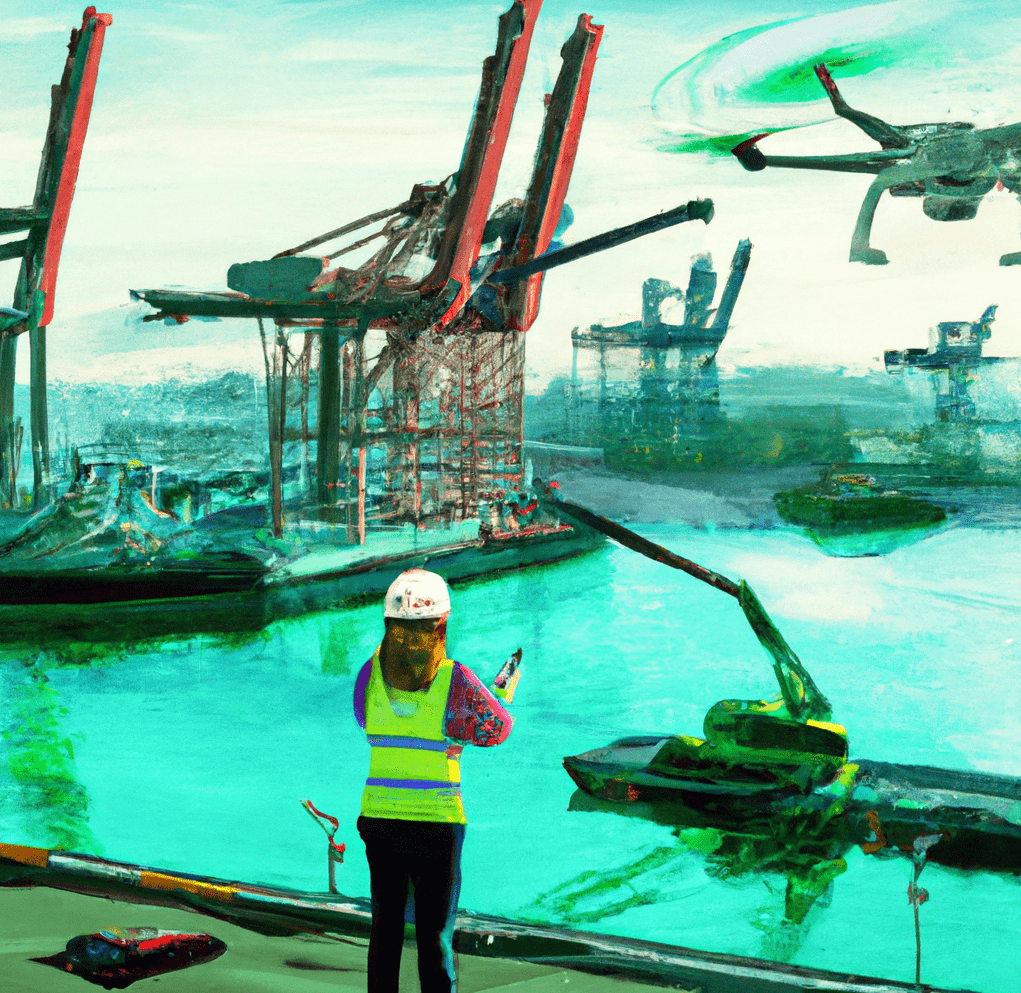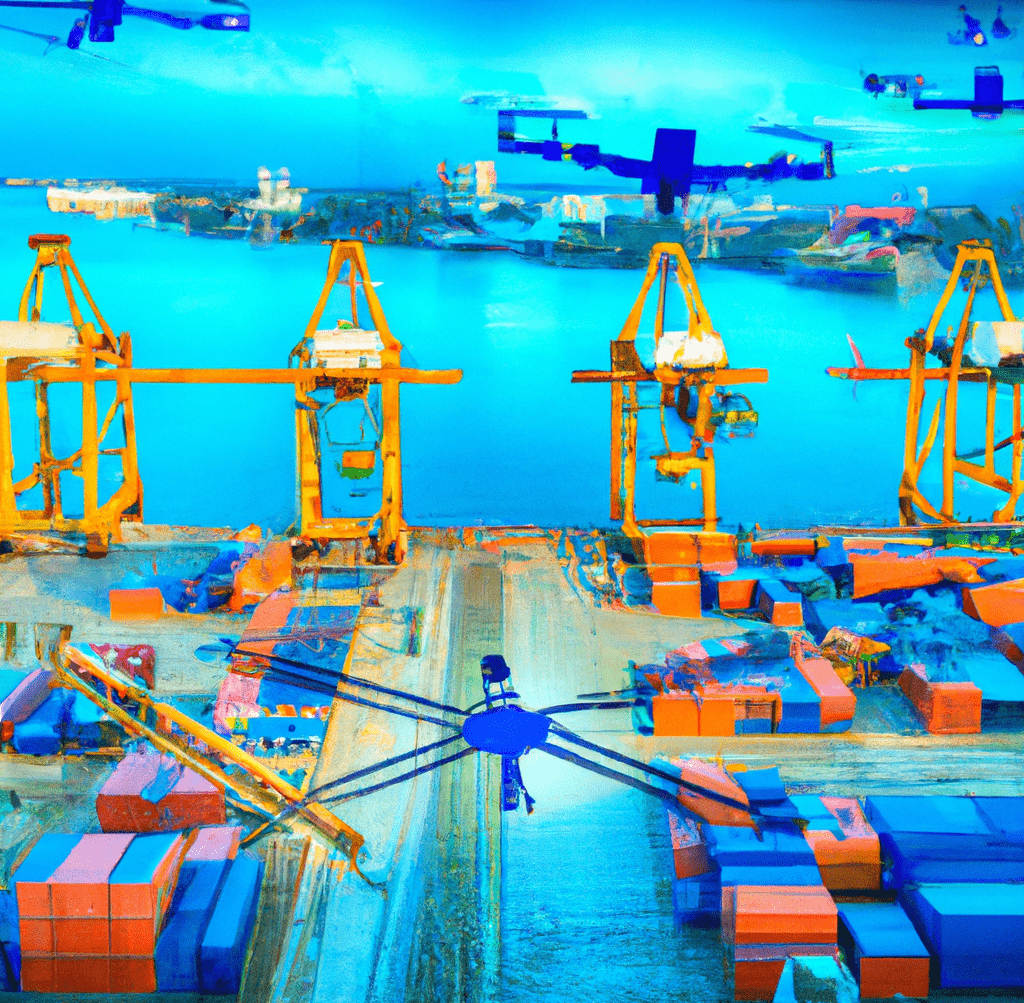 The aim of the document is to provide all ports with a common language on innovation and how to implement it (Generated with DALL·E).
The aim of the document is to provide all ports with a common language on innovation and how to implement it (Generated with DALL·E).
The ports’ road to innovation
Innovation features the latest document published by the International Association of Ports and Harbors (IAPH). PierNext interviews Gadi Benmoshe, Chair of the Innovation Group, who coordinated the white paper that outlines how to integrate innovative strategies, tools and solutions.
 The aim of the document is to provide all ports with a common language on innovation and how to implement it (Generated with DALL·E).
The aim of the document is to provide all ports with a common language on innovation and how to implement it (Generated with DALL·E).
Innovation, according to the IAPH
Although ports are one of the oldest and most traditional industries, they have already started an unstoppable journey towards innovation. The objective is not to be left behind, to improve their operational efficiency and to have the right tools to face global challenges and obligations through a transversal strategy.
Why has the time arrived for port authorities to commit to innovation?
This is the starting point of the document presented by the International Association of Ports and Harbors (IAPH), drawn up by more than ten experts from the most innovative member ports.
The white paper brings together, in fourteen pages, a series of factsheets that point the way to integrating innovative strategies, tools and solutions in a schematic and easy-to-read manner.
Gadi Benmoshe, chair of the Innovation Group, Data Collaboration Committee, and director of Marinnovators, a digital transformation, innovation and cybersecurity consultancy focused on the maritime supply chain, explains that the aim of the document is to provide all ports with a common language on innovation and how to implement it in their organisations.
"Some ports have very advanced innovation strategies but we need the whole chain to be equally efficient and competitive. Our business is international trade and it is important to close the gap by sharing these experiences with other ports," he says.

The highlights of ‘The mindset shift towards innovation. A set of guidance fact sheets for ports’
1. The time for innovation is now
The ability to innovate has become a necessity in today's rapidly changing world. Ports must, as part of their transformation, adopt and adapt to new legal frameworks, strong international competition, accelerated digitalisation, climate and environmental challenges.
This can only be achieved through innovation which, Benmoshe stresses, "must be part of the ports' comprehensive strategy." Given their pivotal position in the logistics chain, ports must promote collaborative actions between the public and private sectors.
2. Innovation is not just about technology
"Technology is an enabler, not a solution in itself. This is something we want to emphasise," the expert stresses. Innovation, therefore, is not just about applying blockchain, virtual reality or any other technology.
The range is wider, as it applies to products and services or processes but also to the organisational structure (the way a port is managed and governed) or the business model.
It is essential to create the conditions that generate ideas in the port and its community so that they lead to scalable and successful innovations.
3. Innovation is part of the port's structure and human capital
"It is not a one-man initiative of the Chief Innovation Officer (CINO), but this figure is the one who brings together the transversal efforts to innovate from the departments of the organisations," he says.
Although the CINOs exercise leadership, it is necessary for the whole organisation to be involved, especially the managers. Create an open ecosystem, with specific working groups in a cooperative environment. Adapting procurement and tendering processes to make them more agile is also important.
4. Innovative tools
The paper identifies hackathons, challenges and pilots as enabling tools. "However, ports must have a long-term plan. It is not about simply organising one of these initiatives without knowing what will happen next or without having a funding or planning model to incorporate start-ups into their structure," advises Benmoshe.
5. Become innovation hubs
Being an innovation hub means providing facilities for entrepreneurs and innovators to test their products and services.
These open innovation hubs can include, among other things, research and development infrastructures, incubators and accelerators, testing facilities, training centres and access to investment funds.
6. Investing in start-ups
The last chapter of the document advises accompanying innovation with the funding that will enable its development. Funding can come from public bodies such as the Ports 4.0 Fund or the various European or global programmes, from investment funds or from the ports themselves.
On the latter, the expert advises, especially those ports with fewer resources, to support these entrepreneurial companies at an earlier stage. "Innovation is also about looking for other income sources. The journey towards innovation requires planning and economic structuring," he explains.
The white paper brings together, in a series of fact sheets, tools and strategies on how ports could integrate innovative solutions in their organizations
Drafting the white paper
More than ten innovation experts belonging to the Innovation Group of the IAPH's Data Collaboration Committee have been in charge of selecting and writing the contents. Benmoshe explains the process.
"Many topics were put on the table and we exchanged ideas that seemed important, less relevant and others that we discarded. The result reflects what professionals with a lot of experience in port innovation have pointed out as the most important topics and tools for incorporating innovation strategies."

The committee was created more than two years ago. Among other initiatives, it has produced a document on Cybersecurity that has recently been adopted by the International Maritime Organisation as part of the recommended documentation on risk assessment.
The working group was set up in February, when the organisation itself saw the need to channel the different issues addressed by the IAPH through the prism of innovation.
"The group includes members from ports such as Ashdod, Barcelona, the Valenciaport Foundation and the National Ports Agency of Morocco. We started to organise various activities, such as a webinar and to think about producing a guide on innovation aimed at managers of port authorities and their ecosystem," recalls Benmoshe.
The IAPH document's journey
‘The mindset shift towards innovation. A set of guidance fact sheets for ports’ will not be the first and only document on innovation.
"We are talking about a series of white papers. This first one brings together what we think is the most relevant. Depending on the reaction it generates, we will possibly produce new papers going into more depth on some of these concepts. Or perhaps we will introduce a new topic that we have not yet addressed," says the president of the IAPH innovation group.
Gadi Benmoshe explains that the group will also collaborate on the World Ports Tracker, a survey that the IAPH regularly conducts among its more than 100 members on developments in the industry.
"For the next survey, the group will prepare a series of questions on innovation to take a snapshot of the situation in the member ports. Another action we are going to take is to explain the document beyond its fourteen pages and answer the questions raised," he shares.
The aim is to integrate the document as a tool available in other bodies such as the IMO or the World Bank, something that is already happening. Benmoshe concludes the interview by explaining that another hope is that, beyond the authors of the document, other member ports will share their experience in innovation.
"We need to listen to other ideas and opinions. The intention of this document is that it generates a debate and inspires other port authorities," he concludes.
Port innovation has already set sail.
To read and download 'The mindset shift towards innovation', click on the following link.





